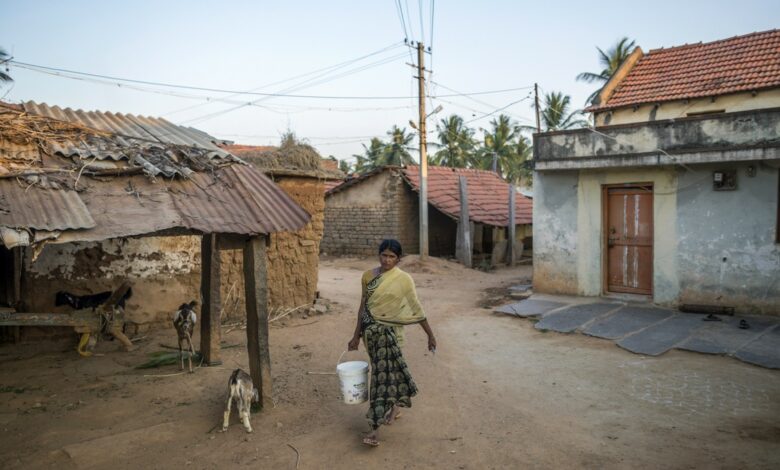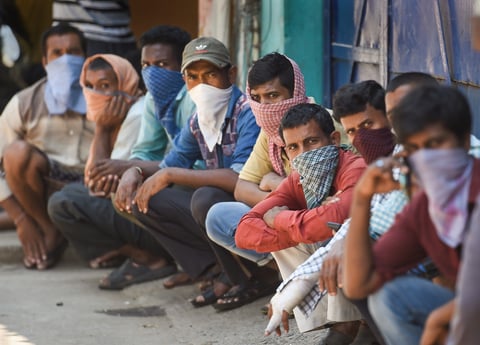
The destruction that was avoided or perhaps, what was not observed in the last year in the rural parts of the country, has now begun to show its signs to a much larger extent.
As we have been seeing that the extent of coronavirus is decreasing in the cities, it is seeping deeper and deeper into the soil of rural India and it is hard not just because of the consequences which the second wave brings, but also the fact that it is harder for the rural parts of the country to escape the given situation.
One major factor which can extend the given situation could be the given healthcare system that India currently has. If we look at it, the conditions of the healthcare system are bad enough in the urban parts of the country, we do not know for sure how much improved can it be for rural India so therefore it becomes important that much attention is paid towards this part of the country.

When we talk in terms of healthcare in rural India, it is going to be difficult for them since the healthcare system does not have proper treatment facilities and there may arise a situation like before where people will have a lack of medicines, kits, oxygen, etc. It will be difficult not to say that this could be because after the situation had started improving in the country, the government did not prepare the healthcare system enough to be treating the patients and fighting the second wave, we were immediately rushed towards vaccines.
Another issue is that when we look at rural India, people have experienced treatment both from Public sector hospitals and private sector hospitals and it is seen that they prefer the private sector more since they have known the kind of mistreatment being done in the government hospitals. This is something that arises a lot of lack of trust in the minds of the rural population, to an extent that they have a certain sense of vaccine hesitancy developed in them, which is very valid and fair if seen from their perspective.
When we talk about agriculture, it was one sector that was not much affected last year as a consequence of the pandemic and was the one that was helping the economy thrive but again we can not possibly forget the fact that some aspects of the rural economy were still very much affected and it was noted that something so basic as hunger had still not disappeared.

In October 2020, according to a survey, it was found that one in every three respondents of the survey mentioned that they had been skipping meals. There has been a massive reduction in the incomes as well. Now considering this along with the major healthcare system crisis that may arise, might push the rural families to a deep edge unless given proper attention.
The government needs to treat this as a matter of urgency and take proper measures now to quickly and effectively bring in a better and more trustable healthcare system for rural India.
Now when we talk about solutions to this and how the hesitancy in terms of vaccination could be reduced is to be open with the public, be transparent to them, build a level of trust, make them feel involved, give them data related to the vaccine, and understand what is the reason behind this vaccine hesitancy.
According to Azim Premji‘s state of working India report 2021, 20 percent of households have lost 100% of their income, 16% of people are now below the threshold of minimum earnings. When we talk about the situation in terms of poverty in rural India, we see that poverty in rural India has surged by almost 15 percent. Another important thing that the Azim Premji state of working report 2021 had pointed was in terms of women employment, it was shown that while men had started going to work around September and October when the situation was slightly improved, it was seen that women were not allowed to re-enter the workforce in the same way as men.
Also, we can not forget to take into consideration the fact that rural unemployment has slowly begun to rise, and when we look at the report collected from the recent CMI data, it is clearly shown that the unemployment in the rural parts of the country has been on a rise.
It has been over two months since the surge of the second wave began in India and the government has seen to have washed off their hands from the issue, they have left the issue to be tackled by the states but again, when we think about it the states also need some amount of fund to control the situation and provide relief. Although there has been some sort of relief that is being provided, we can not forget that it is much smaller than what is required to seriously control the situation.
Steps that need to be taken right now, as we have time, include expanding the NREGA scheme for employment in rural areas and make sure it is providing wages that are complying with the state’s minimum wage criteria, other things include open work sites since many people do not benefit from NREGA or might as well convert the NREGA scheme into some sort of a cash transfer.
Lastly, the government should provide cash support to the rural Indian economy because many parts of rural India are not even able to access NREGA. so it becomes really important for the government to pay more attention to rural India this time around and not repeat the same mistakes which have been seen during the second wave.




